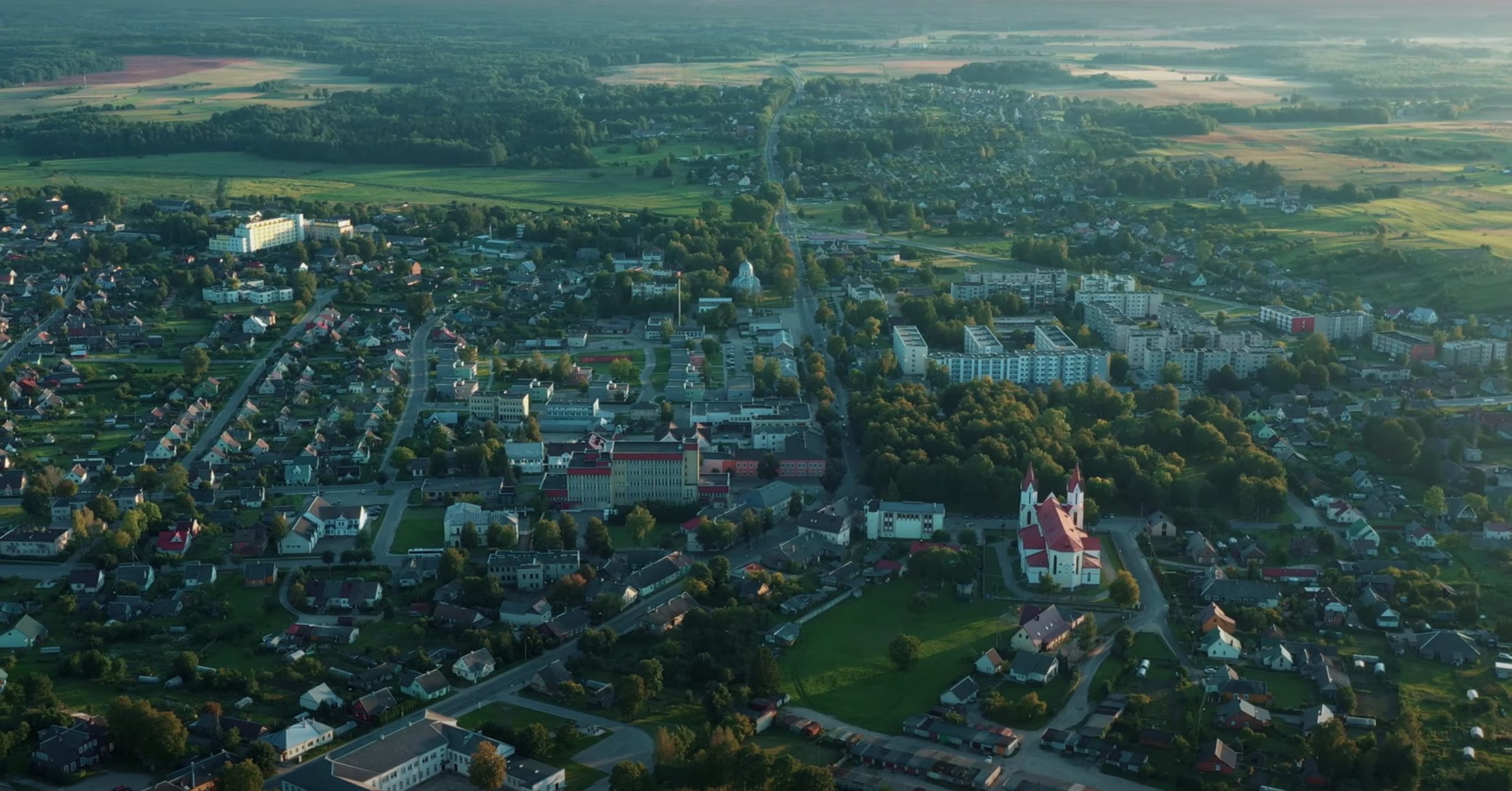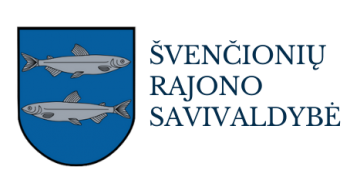
History
Since ancient times, Švenčionys has been the heart of Nalšia Region. The 13th century historic records mentioned Nalšia, the historical land of Eastern Lithuanians, together with Deltuva, Lithuania and Upytė comprising the Ethnographic region of the Highlands.
The origin of the name of Švenčionys is somewhat puzzling: sacred woods might have grown and holy waters might have flowed here. Legends about this area are still being told to this day. One legend associates the name of Švenčionys with the sacred woods that existed here. The old name of the location was Šventėnai. Pagan priests are said to have lived here and a fire burned continuously for religious ceremonies.
The center of the region, Švenčionys is an ancient settlement established on the crossroads leading from Prussia to Russia. All of the legends mention that Švenčionys was once a big city. Three important trade routes led to the city, along which many merchants from Polotsk, Vitebsk and even more distant places would travel to the sea. During the times of Vytautas the Great, Švenčionys was his estate. In the 15th century, Vytautas brought Tartars to Švenčionys and its surroundings. Their descendants were skillful craftsmen, making the city a crafts center in the Middle Ages.
According to church documents of 1514, the first church in Švenčionys was built by Lithuanian Grand Duke Vytautas the Great in the years 1392-1414. In 1636, a new wooden church was built and later rebuilt several times. In 1898, a new stone church was built. Russian general K.Chechovich, resident of Švenčionys, funded the decoration of its main altar. In 1486 Švenčionys was called a township in historical documents; eight years later Švenčionys county was mentioned. In 1565 Švenčionys was one of the three court centers in the county of Ašmena. Until the end of Lithuania’s existence in the Lithuanian-Polish union, the region was called the Užneris district with its center Švenčionys.
At the end of the 18th century there was a post station and parish school that was attended by 28 pupils in 1828. The town of Švenčionys belonged to Admiral Chichiagov. In 1837 it was bought from him and began to develop in accordance with city regulations. In that year, Švenčionys had 223 residences, a Catholic church, a Russian Orthodox church, 2 synagogues, 30 shops, and 34 taverns. These data show that Švenčionys was rapidly developing in the eastern ethnographic region as an important administrative, economic and cultural center. Other centers of economic and cultural life began to develop in the area of Švenčionys.
Since the 17th century, Kaltanėnai has been known as a township. In 1633, a church and a Franciscan monastery were built here. The monastery was closed in 1832 and a two year school was established near it in 1794. In 1807, the school had 30 pupils.
In 1795, when the Lithuanian-Polish union was finally partitioned and Lithuania was occupied by Russia, the Vilnius governship formed the Užneris district with its center in Švenčionys. In 1843, it was called the Švenčionys district.
The 19th century was very dramatic; full of social, political and ethnic conflicts; both for Švencionys area and the whole of Lithuania. Napoleon’s army marched back and forth this country as well as the Russian army. Napoleon stayed in Švenčionys to oversee the parade of his troops. Napoleon’s house stood in Vilnius St. until 1942.
The events during the Uprising of 1831 were very stormy. The leader of the Uprising, the Dean of the Revolutionary Guards A. Labutis was murdered in Švenčionys in 1831 and was buried in the Švenčionys Church Cemetery. The members of the Uprising were defeated. In the north-west outskirts of the town there is a hill called Gallows Hill. A story tells that the Czar’s administration used it for hanging the members of the Uprising.
After 1832-1864, the cruelest Czarist occupation began in Švenčionys as well as all over Lithuania: it was the time of gendarme and court repressions, prisons and exiles, colonization, Lithuanian language speech and press persecution, and russification through offices and schools by means of imposing the orthodox religion. Polonization was also intensified through the church. The national movement and the national revival process in this country were difficult but consistent and unstoppable. In the long run, a group of well-educated, progressive priests joined together to awaken the national spirit and to spread the Lithuanian language and prohibited press.
From 1884 to 1886, Aleksandras Burba, a dean from Labanoras, was a well-known public figure in the Vilnius area, and later among the Lithuanian-Americans. He, together with an active book smuggler Karolis Baužys, energetically revived the Lithuanian spirit, distributed Lithuanian literature and fought to discourage alcohol consumption.
Among the book smugglers and researchers priest Placidas Šarkauskas is mentioned, who, when serving as a vicar in Švenčionys around the year 1900, transported Lithuanian publications from Prussia and distributed them together with: Adomas Mykolas Padleckis from the village of Žebalai, Stanislovas and Mykolas Vaiškūnai from the village of Kurpiai, and others. In the parish Lithuanian catechisms, prayer books, brochures and newspapers were distributed.
Jonas Burba (1853-1915) – famous priest, temperance advocate, press distributor and supporter of book smugglers earned much praise in the Švenčionys area. From 1903-1909 he was the dean in Švenčionys and he is buried in Kaltanėnai cemetery. He fought against Polish customs in the Švenčionys parish and together with the vicars encouraged the national spirit in people.
The question of education in the Švenčionys district schools has always been complicated. We do not know when the first school was opened in Švenčionys but there is information that there was a parish school in the 18th century. After the Uprising of 1834 the Russians closed it and established their own district school. Before the WWI there was an eight-year Russian gymnasium in Švenčionys, a four-year boys school, teacher training courses for men, a four-year school for girls and an elementary school. The Lithuanian language was not taught in those schools, although the majority of the students were local Lithuanians. The establishment of Lithuanian schools started together along with the national revival. There were some illegal schools during the years of the prohibition of Lithuanian press. Systematic care of Lithuanian schools began just before the WWI and after.
In 1913, in the city of Vilnius and its surrounding areas, the Lithuanian educational society “Rytas” was established. Its main purposes were educating adolescents and adults, training teachers, and above all organizing and supporting Lithuanian schools. German occupants banned “Rytas” society, but later gave their permission for it to operate again. “Rytas” renewed its activities in 1917. While resisting obstacles created by German occupants, Švenčionys patriotic intelligence joined efforts in strengthening of Lithuanian spirit during the war. Amazing people like A. Jurkėnas, S. Lemešis, P. Merkelis, V. Valiulis, and K. Vinciunas should be mentioned. Priest Benediktas Virbickas united well educated Lithuanians, established a library, held seminars for teachers at the house of V. Valiulis, trained educators for the village schools who were sent all over the district and also taught young people to sing and to recite poems.
During the war, legal Lithuanian schools were also opened. In Švenčioneliai, an elementary school was opened in 1915 and existed until 1924. The first truly Lithuanian school in Švenščionys was established in 1916. During the war schools were also opened in Daukšiai, Dotenėnai, Guntauninkai, Kretuonys, Motiejūnai, Ragaučina, Reškutenai, N. Strunaitis, Vidutinė and Vošiūnai. Švenčionys dean J. Petronis, and mathematician Zigmas Žemaitis having returned from Russia, were encouraged and supported by “Rytas” society. They overcame German obstacles and established a Lithuanian gymnasium in Švenčionys which was opened on January the 8, 1919. After WWI, Švenčionys district was alternately under bolshevik, Polish or Lithuanian power.
In autumn 1920, the Lithuanian army suffered casualties while fighting in Švenčionys when the Poles attacked Vidine Street. In 1920, from October – November, the district (except for the smaller western part) was occupied by Zheligovshio troops and then illegally annexed to Poland. The Polonization and colonization of the district was carried out through both direct and indirect legal, administrative, economic and cultural means through state offices, press, schools, and churches. Švenčionys gymnasium that functioned in the period of 1919-1937 provided a small source of Lithuanian culture and national identity. When WWII broke out, the 50 years of occupation began. In September 1939, the Soviet Union‘s Red Army invaded. At the end of the year, Švenčionys and a large eastern part of the district were annexed to Belarus and immediately suffered from Bolshevik, social and national terrorism. In the summer of 1940, when the USSR occupied Lithuania, Švenčionys was given to Soviet Russia but the eastern territory of the district was left for Belarus.
Hitler’s cruel occupation (1941-1944) was followed by the second Soviet invasion that lasted until 1990 – the Restoration of Lithuania’s Independence. Two hundred years of occupation left deep scars upon the Švenčionys district: deeper than those left upon the rest of Lithuania.
Vilniaus str. 19, LT-18117 Švenčionys
Phone +370 387 66372
Fax +370 387 66365
E-mail savivaldybe@svencionys.lt
Municipality budget office code 188766722
Data is collected and stored
in the Register of Leagal Entities
